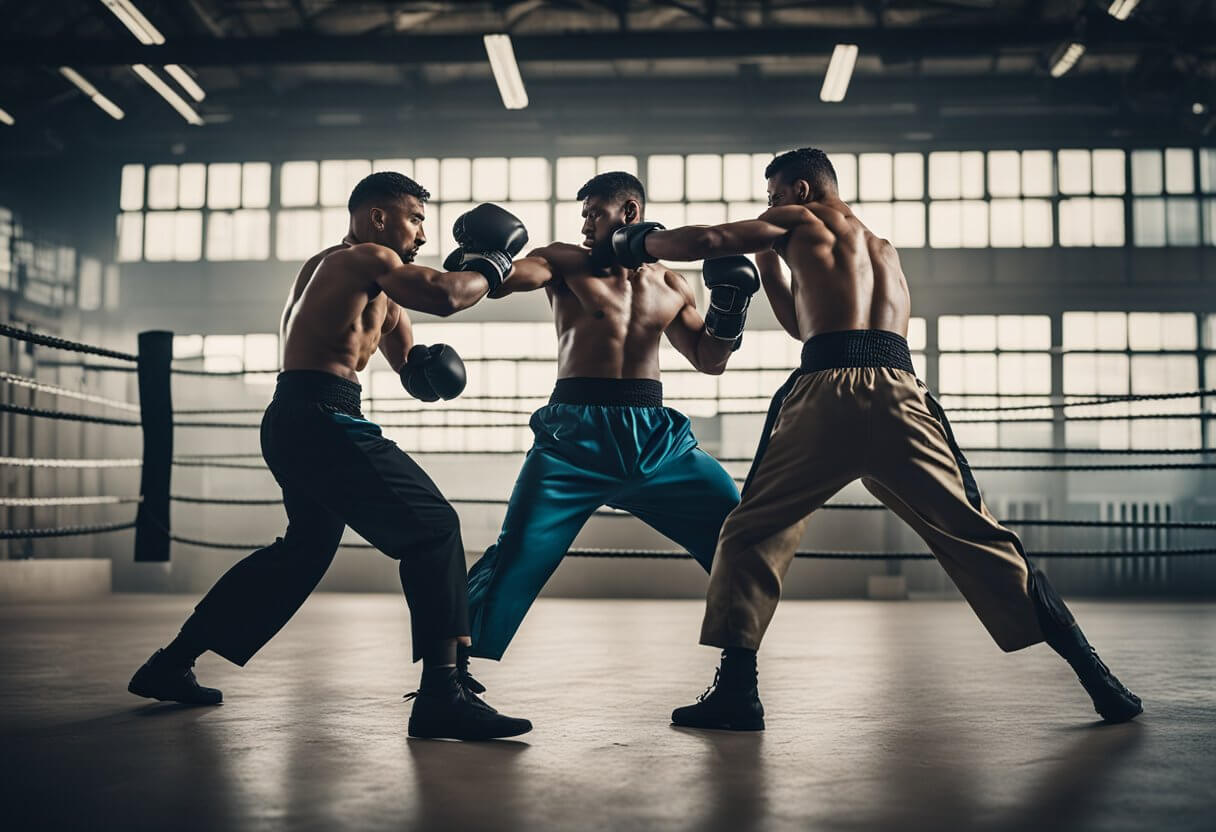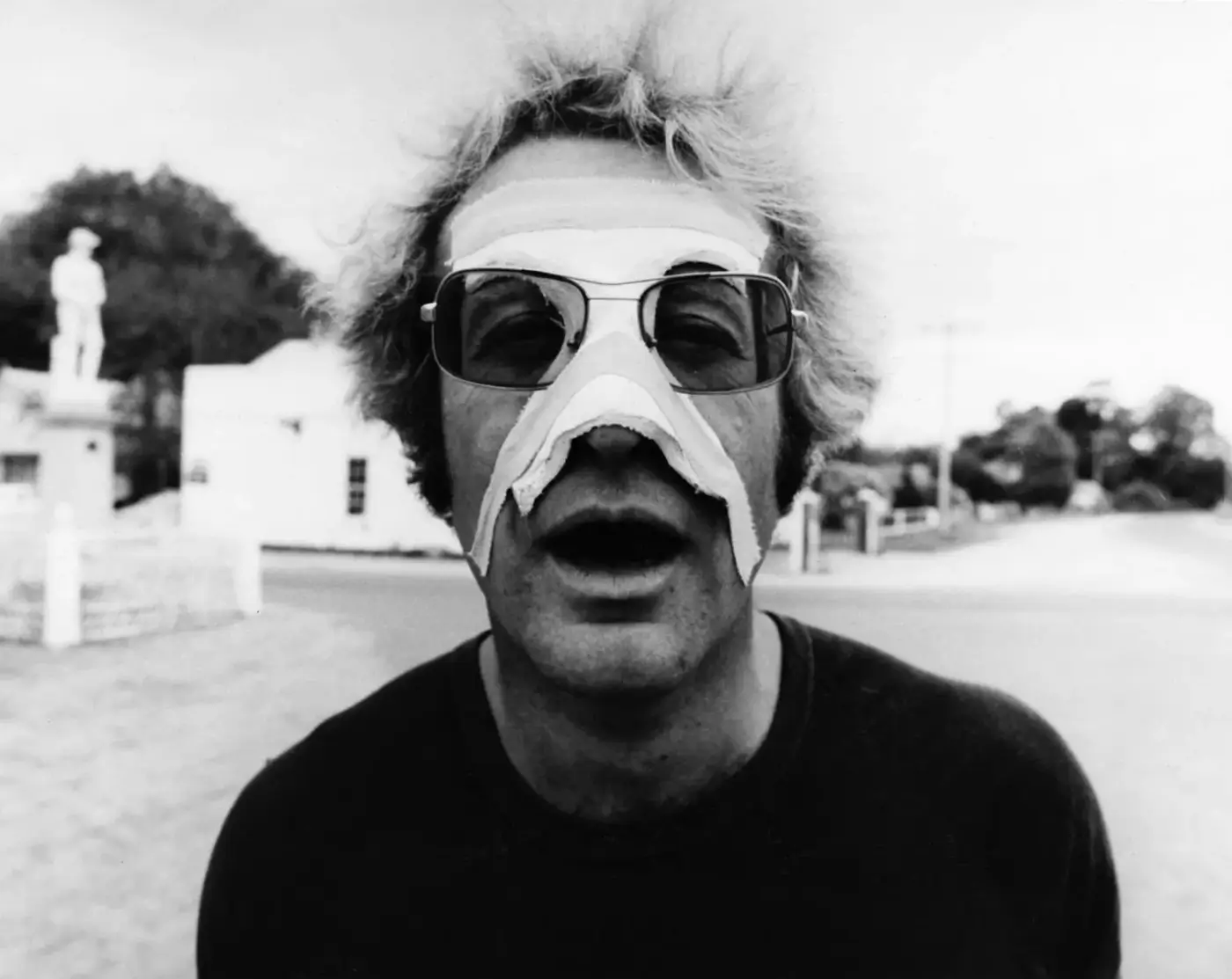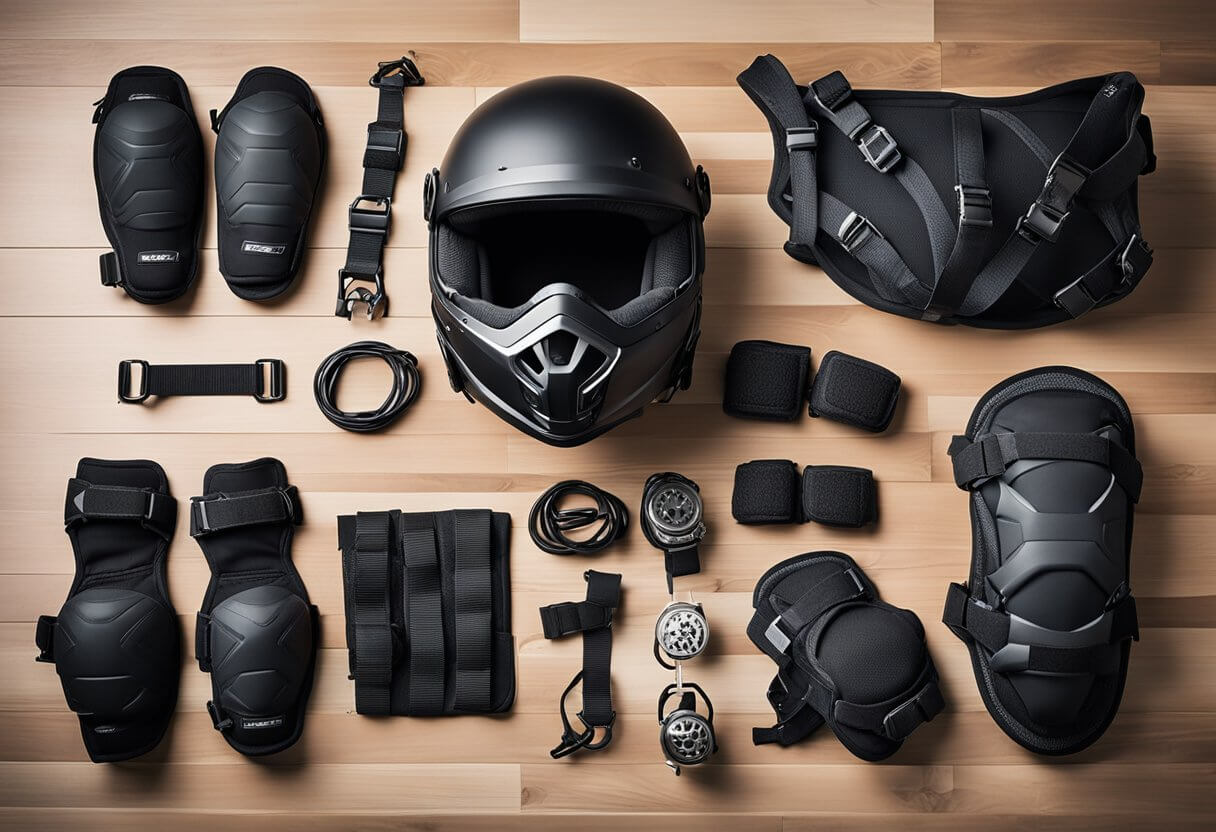Fight Choreography Introduction
Fight choreography is the art of creating realistic and compelling combat sequences for stage and screen without causing actual harm to the performers. This intricate practice involves a mix of technique, precise timing, and dramatic storytelling, ensuring that each movement looks believable to the audience.
Choreographed fight scenes are crucial in conveying tension and excitement in various forms of media, from live theatre productions to high-octane action movies.

With the proper training and understanding of the craft, fight choreography elevates fight sequences to more than just punches and kicks; it turns them into an integral part of the narrative.
Professionals in this field often undergo fight choreography training through classes and workshops to master the technical skills required.
Not only does this involve physical preparation, but also a deep understanding of safety procedures to protect the performers involved.
Key Takeaways
- Fight choreography is a practiced form of staged combat seen in theater and film.
- Effective choreography requires a combination of physical skill and artistic vision.
- Professionals use specialized training to ensure safety and realism in fight scenes.
History and Evolution of Fight Choreography
Fight choreography has developed from historical training for combat to an intricate art form that enhances storytelling in both theatre and film. This evolution highlights the blend of technique, creative expression, and the influence of martial arts on modern choreography.
Origins of Stage Combat
Stage combat began as a practical need to train soldiers and evolved into a performance art. The earliest practitioners were able to create a safe yet realistic depiction of physical conflict for live performances. In theatre, these sword fight choreography pieces were integral to plays like Shakespeare’s Macbeth, where audiences expected to witness the swordplay as part of the drama.
Influence of Martial Arts on Fight Choreography
Martial arts have heavily influenced fighting choreography. The fluidity and diversity of martial arts forms provided a rich vocabulary for choreographers, drawing from disciplines such as Wushu and Tai Chi. For instance, the choreography in Crouching Tiger, Hidden Dragon, which brought a new aesthetic of wire-assisted fight scenes to Hollywood, was steeped in the principles of traditional martial arts.
Cinematic Milestones
The landscape of fight choreography was revolutionized by movies such as The Matrix, which introduced Western audiences to a more sophisticated and stylized form of choreographed combat. This movie not only showcased fight choreography animation but also set the bar high for future best fight choreography movies. The Society of American Fight Directors has played a significant role in enhancing the standards of choreography, offering fight choreography certification to ensure the quality and safety of fight scenes on stage and screen.
Fight scenes now often incorporate a mix of martial arts, street fighting, and traditional choreography techniques to produce unique and compelling narratives. Films like John Wick further pushed the envelope, mainstreaming long-take action scenes with complex fighter choreography.
With increasing demand, fight choreography jobs have become more specialized, and the availability of fight choreography classes near me reflects the growing interest in this field. Skilled choreographers understand the importance of how to make good fight choreography, considering the story, characters, and visual impact, culminating in masterful sequences that resonate with audiences.
Principles of Choreographing Fight Scenes

Choreographing engaging fight scenes demands a meticulous blend of creativity, technique, and adherence to the narrative. It involves understanding the story’s needs while ensuring authenticity and maintaining the distinct style of the combatants.
Conceptualizing the Fight Scene
One starts with the vision for the fight scene which acts as a roadmap for choreography. This process can be inspired by best fight choreography movies that often set a benchmark in the industry.
When conceptualizing, choreographers decide whether the scene requires a raw and gritty style reminiscent of fight choreography in John Wick, or a more stylized approach like lightsaber fight choreography seen in iconic sci-fi films. These initial decisions are crucial as they lay the foundation for the subsequent choreographic work.
Character and Story Integration
Fight scenes must serve the narrative by reflecting character motivations and advancements in the plot. Character integration is seen in movies with good fight choreography, where each movement gives insight into the characters’ skills and mental states.
Story integration requires aligning the fight’s intensity and outcome with the plot. For instance, sword fight choreography in a medieval setting may speak volumes of a character’s heritage and position in society.
Maintaining Realism and Style
A realistic portrayal that aligns with the film’s world is imperative for immersion. Maintaining realism with precise moves learned in fight choreography classes can give actors the proficiency needed to execute believable scenes.
The style of fighting should remain consistent; whether it’s the fluidity in fighter choreography seen in dance-like combat or the technical precision showcased in fight song dance choreography.
Maintaining style also extends to using fight choreography animation to pre-visualize complex sequences.
Technical Aspects of Fight Choreography

Fight choreography is an intricate art that combines the precision of movement with the demands of visual storytelling. It involves a detailed understanding of camera angles, safety protocols, and the effective use of props to deliver realistic and engaging combat sequences.
Camera Techniques for Capturing Action
In fight scene choreography, camera techniques play a pivotal role in enhancing the intensity and clarity of the action.
Directors often employ a variety of shots, such as wide-angle views to establish the scene and close-ups to capture the actors’ expressions and details of the physical exchange.
Strategic camera movements, including pans and tracking shots, follow the combatants to maintain a dynamic rhythm.
For the best fight choreography movies, like those seen in films such as John Wick, the camera is choreographed in tandem with the fighters to ensure that each movement is clearly visible and impactful.
Safety Measures and Rehearsals
For stunt performers and actors, safety is always paramount.
Fight choreography classes highlight the importance of meticulously planned rehearsals and adherence to safety guidelines.
Comprehensive risk assessments are conducted, and protective gear is used during practice. Techniques developed for sword fight choreography or lightsaber fight choreography, for instance, incorporate precision to avoid injury.
Professionals working in fight choreography jobs or those looking for fight choreography certification must understand the importance of safety measures that protect both performers and the crew during highly physical sequences.
Props and Weaponry Handling
Props, especially weaponry, need to be handled with skill and care in a fight scene.
Whether it’s for a historical epic or a futuristic fantasy, the use of swords, firearms, or even everyday objects as weapons requires training.
Through fight choreography classes near me, actors can learn the techniques to wield these props convincingly while ensuring they move harmoniously with their counterparts in a dance-like manner.
Even in animated fights, fight choreography animation requires an understanding of how weapons interact with the environment and characters to create believable action.
Skills and Training for Fight Choreographers

Effective fight choreography requires a combination of physical skills, creative vision, and technical understanding. To ensure realistic and safe fight scenes, choreographers must engage in rigorous training and continuous practice.
Martial Arts and Stage Combat Proficiency
A fundamental requirement for fight choreographers is a comprehensive skill in various martial arts. This includes a deep understanding of their movements, techniques, and the principles behind them.
Alongside martial arts, they must gain proficiency in stage combat—a unique blend of performance and physicality that ensures fights look realistic yet remain safe for actors.
By working with fight directors and choreographers, aspirants can learn the nuances of stage combat including swordplay, unarmed combat, and various weapon-based fighting styles.
Dance and Gymnastics Contributions

In addition to combat skills, incorporating elements of dance and gymnastics can elevate a choreographer’s work, adding fluidity and aesthetic appeal to fight sequences.
Dance skills bring a sense of rhythm and enhance the ability to execute complex sequences, while gymnastics training provides fight choreographers with the techniques to include dynamic flips and tumbles, contributing to visually striking combat scenes.
The understanding of body mechanics and spatial awareness gained from these disciplines is invaluable in crafting engaging choreography.
Building a Choreographer’s Portfolio
Aspiring choreographers should focus on building a diverse portfolio to showcase their skills and versatility in fight choreography.
Documenting practice sessions, performances, and training progress is key. They should seek opportunities to demonstrate their ability to plan, communicate, and execute choreographed scenes, as evident in the advice offered on how actors can work effectively with fight choreographers.
Demonstrating continued education, such as courses offered by the Society of American Fight Directors, validates their expertise and commitment to the art.
Notable Fight Choreographers and Iconic Fight Scenes

Fight choreography in cinema transforms action into visual poetry, establishing the careers of choreographers who have masterfully crafted unforgettable fight scenes.
From the early influencers who set the stage for combat in film to the modern innovators who continue to push boundaries, their work has been central to some of the most iconic moments in movie history.
Pioneers of Fight Choreography
Bruce Lee emerged not just as a formidable on-screen fighter, but also as an innovative choreographer.
His work in films like Enter the Dragon showcased a blend of martial arts that was groundbreaking for Western audiences.
Another trailblazer, Yuen Woo-ping, is recognized for his work on classic martial arts films such as Drunken Master, setting the bar for choreography with his intricate and expressive style.
Modern Masters of the Craft
Quentin Tarantino has consistently employed skillful choreography in his films.
Uma Thurman‘s portrayal of The Bride in Kill Bill, choreographed by the legendary Yuen Woo-ping himself, stands testament to how integral fight scenes are to character development and storytelling.
Rick Sordelet and J. Allen Suddeth have become renowned figures in stage combat, bringing their expertise to hundreds of productions and influencing the direction of fight choreography across mediums.
Breakdown of Iconic Cinematic Fights
One can dissect the diner fight scene in Kill Bill to understand how choreography intertwines with character and plot.
The meticulously designed sequence led by Uma Thurman against the Crazy 88 gang demonstrates how the pacing, style, and movement in fight scenes serve as an extension of the narrative.
Another iconic fight worth mentioning is the Bride’s showdown with O-Ren Ishii, a blend of stylistic swordplay and dramatic tension, which has left an indelible mark on the genre.
Frequently Asked Questions

Fight choreography is a critical component of action cinema and stage performances, blending the art of movement with the storytelling of physical conflict. This section provides clear answers to common questions about learning and mastering this dynamic craft.
How can one learn the basics of fight choreography?
Individuals can begin learning fight choreography by enrolling in stage combat workshops, attending martial arts classes, or studying under an experienced fight choreographer.
These avenues offer foundational techniques necessary for safe and realistic portrayals of fight scenes.
What are the elements of effective fight choreography in film?
Effective fight choreography in film requires a deep understanding of pacing, spatial awareness, and physical storytelling.
Each movement should serve the narrative, conveying character motivations and advancing the plot, while ensuring the safety of all performers involved.
What are some examples of excellent fight choreography in cinema?
Iconic examples of fight choreography in cinema include the precise and narrative-driven duels in “Crouching Tiger, Hidden Dragon,” the innovatively shot hallways scenes in “Oldboy,” and the raw intensity of the boxing sequences in “Rocky.”
These films demonstrate the power of choreography in enhancing the story and characters.
How does animation influence fight choreography?
Animation allows for exaggerated and creative fight choreography that would be impossible in live-action.
Animated fight scenes often influence real-world choreography by pushing the boundaries of what is conceivable and inspiring choreographers to innovate new moves and sequences.
Can you recommend any comprehensive courses for aspiring fight choreographers?
Yes, there are dedicated courses and certifications offered by institutions such as the Society of American Fight Directors that cover a wide range of styles and techniques integral to aspiring fight choreographers looking to cultivate their skills professionally.
What are the career steps for becoming a professional fight choreographer?
The path to becoming a professional fight choreographer typically involves gaining extensive experience in stage combat or martial arts. You also need to network within the industry, build a portfolio of work, and continually learn to adapt to various styles and demands of different production environments.




